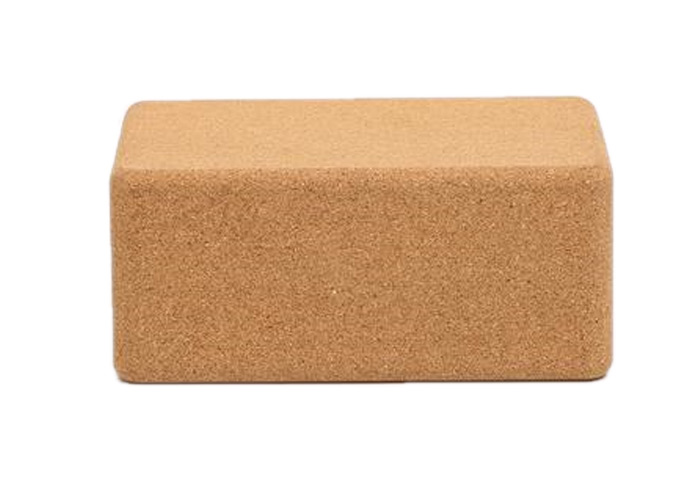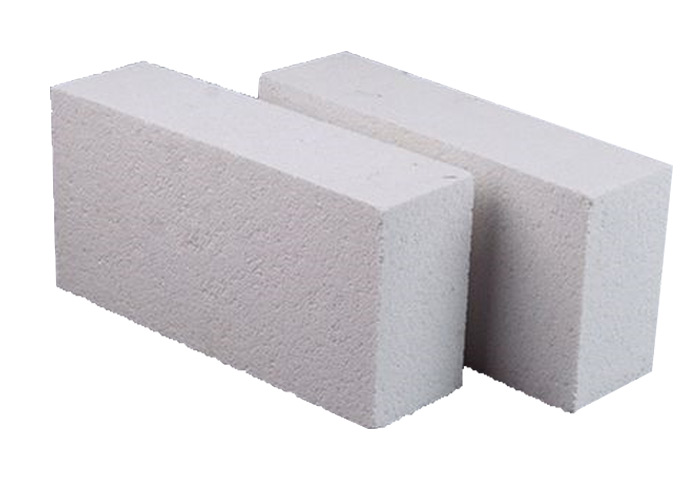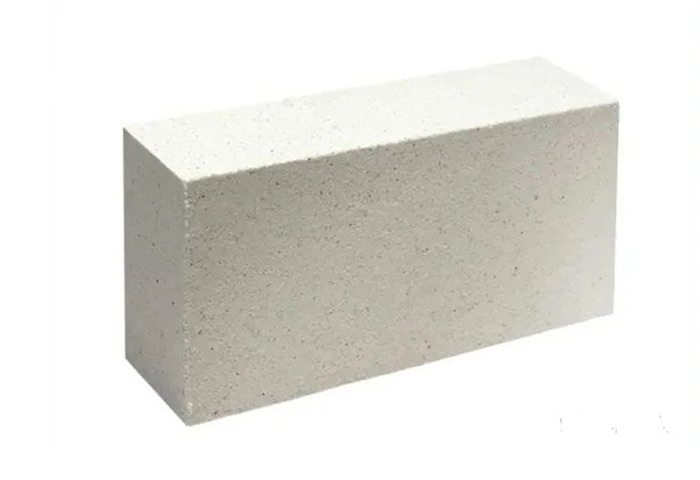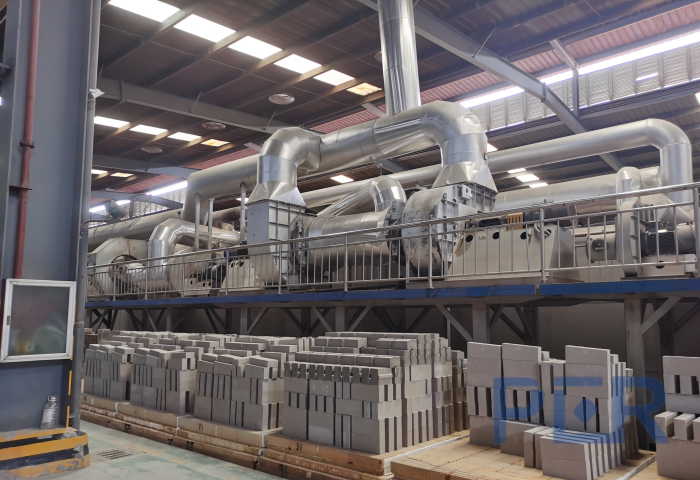Lightweight Refractory Bricks

PER lightweight brick manufacturer offers a wide range of lightweight refractory brick types, as well as products customized to meet your needs in a variety of physical and chemical specifications. We ensure the best quality while keeping the sales price as low as possible. Kami percaya pada kejujuran dan integritas sebagai produsen paling tepercaya dan mitra terpercaya.
Selama bertahun-tahun, we have supplied standard refractory bricks and profiled refractory bricks to various industries and companies. Filosofi layanan kami adalah menyediakan dengan cepat, hasil berkualitas tinggi untuk semua pelanggan kami.
Produk kami menjalani pengujian kualitas yang ketat untuk memastikan kinerja yang sangat baik dari waktu ke waktu.
PER refractories company has a large inventory of high quality lightweight refractory bricks. Contact us today for a better price on lightweight bricks.
Types of Lightweight Refractory Bricks
The raw materials for lightweight refractory bricks can be classified as clay, silikon, aluminium, dan mullite. Lightweight bricks are insulated because they contain numerous pores (baik tertutup maupun terbuka). Metode menyebabkan porositas termasuk penambahan bahan yang mudah terbakar, busa, dan bahan kimia.
A lightweight refractory brick system is a porous structure inside, with the insulation properties of fixed block insulation refractory products, also known as lightweight insulation refractory bricks. According to the raw materials used, lightweight refractory bricks can be divided into clay. Siliceous. High alumina. Lightweight bricks, such as magnesia.
The use temperature of lightweight insulating refractory bricks is about 900~2000℃.

Lightweight Clay Insulation Bricks
Lightweight clay insulation brick is made of refractory clay as the main raw material of Al2O3 content of 30%~48% of the insulation refractory products.
Its production process adopts the combustion additive method and foam method. It is made of refractory clay, drifting beads, refractory clay clinker as raw materials, adding binder and sawdust, and is made by batching, percampuran, cetakan, pengeringan, dan menembak. The bulk density is 0.31.5g/cm3. product. The production of light clay insulation bricks accounts for more than half of the total production of insulating refractory bricks.

Lightweight Alumina Hollow Brick
Lightweight alumina hollow brick is also called high alumina heat insulation brick. The alumina content is above 48%, mainly composed of mullite and glass phase or corundum together. It has a bulk density of 0.4-1.35g/cm3, a porosity of 66%-73%, a compressive strength of 1-8MPa, and is widely used in ceramic tunnel kilns, roller kilns, shuttle kilns, and wall kilns. As well as in various heating and coking furnaces and other thermal equipment and heat treatment lining materials in the steel industry. dll..

Lightweight Mullite Insulation Bricks
Lightweight mullite bricks are made of imported slab corundum and high-purity electrofused corundum as the main raw materials. High-temperature resistance up to 1790℃ or more.
Load softening start temperature 1600-1700℃, room temperature compressive strength 70-260MPa, ketahanan kejut termal yang baik, kekuatan tinggi, laju creep rendah pada suhu tinggi, low expansion coefficient, small thermal coefficient, resistant to acidic slag erosion.
And it can greatly reduce the weight of the high-temperature furnace body, transform the structure, save materials, save energy, and improve production efficiency.
It is suitable for electric kiln insulation, various high-temperature rotary kilns, tunnel kilns, nitrous gas kilns, dll..

Lightweight Silica Insulation Brick
Light silicon insulation brick is made of silica as the main raw material of SiO2 content of not less than 91% of the insulation refractory products.
Light silicon insulation brick bulk density of 0.91.1g/cm3. thermal conductivity is only half of the ordinary silicon brick, has good heat resistance vibration, and its load softening start temperature up to 1600 ℃, much higher than clay insulation brick.
Karena itu, the highest use temperature of silica insulation brick can reach 1550℃. It does not shrink at high temperatures and even has a slight expansion.
Advantages of The Lightweight Bricks Produced by PER Refractory


1. Lightweight: The most important characteristic of lightweight bricks is their weight. These bricks are much lighter than conventional bricks, making them easier to handle and transport.
2. Thermal insulation: Lightweight bricks have good thermal insulation properties. They have a lower thermal conductivity than traditional bricks, which means they can help regulate the temperature of a building more efficiently.
3. Fire resistance: Many lightweight bricks are fire-resistant, making them ideal for buildings in areas prone to wildfires or other types of fires.
4. Sound insulation: Lightweight bricks also have good sound absorption, making them an excellent choice for buildings in noisy areas.
5. Environmentally friendly: Many lightweight bricks are made from recycled materials, which makes them an environmentally friendly choice.
6. Cost-effective: Lightweight bricks are typically less expensive than traditional bricks, making them a cost-effective choice for construction projects.
PER Refractories is a professional manufacturer of refractory fire bricks. The lightweight bricks we produce offer a variety of advantages, including their weight, thermal performance, fire resistance, sound insulation and cost effectiveness. Because of the wide variety of materials used to manufacture lightweight bricks, builders can choose materials that meet their specific needs.
The Production Method of Lightweight Bricks
The reason for the heat insulation of lightweight heat-insulating brick is that the fire-proof brick contains many pores (closed and open pores). The methods that cause the porosity, yaitu.
The production method of lightweight bricks
1. Adding combustible materials. Add the right amount of combustion additives to the mud, such as sawdust. Charcoal powder. Lignite or peat coke powder. Petroleum coke powder. Walnut shells, dll.. The accessions are burned off when the fire-resistant bricks are fired to form pores. When the accessions are burned out, the ash should be less.
2. Foam method. Add a foaming agent to the mud, so that the mud produces bubbles. And add a fixing agent to stabilize the formed bubbles.
3. Chemical method. Add carbonate and acid, caustic alkali, aluminium, or metal and acid to the mud. The gas is produced by chemical reaction to make the product obtain air pores.
Tentang PER Perusahaan Refraktori


Perusahaan Refraktori PER terletak di Kota Xinmi, Provinsi Henan, kampung halaman bahan tahan api di Cina. Perusahaan kami adalah perusahaan tahan api berbasis teknologi yang mengintegrasikan R&D, produksi, penjualan, dan layanan teknis. Sumber daya yang kaya dan kualitas yang sangat baik di wilayah ini memberikan kondisi unggul yang tak tertandingi untuk produksi bahan tahan api. Produk utama kami adalah batu bata tanah liat tahan api, batu bata tahan api alumina tinggi, bata silika tahan api, batu bata tahan api magnesium, batu bata mullite, batu bata isolasi, dan produk tahan suhu tinggi lainnya.
PER menganggap hal yang paling penting, kami percaya dalam menanggapi setiap produk dengan serius dan menerima setiap pelanggan dengan tulus. To provide fast and high quality results for all our customers. PER Refraktori akan menjadi produsen refraktori paling tepercaya dan mitra terpercaya Anda.
Perusahaan PER refraktori adalah basis produksi hijau, hemat energi, dan bahan tahan api baru yang ramah lingkungan. Perusahaan kami telah lulus ISO9001:2008 sertifikasi sistem mutu internasional dan GB/T24001-2004 / ISO14001:2004 sertifikasi sistem manajemen lingkungan, sertifikasi lembaga inspeksi kualitas perusahaan. Produk kami terjual dengan baik di lebih dari 20 countries worldwide. Mereka adalah produk refraktori pilihan untuk metalurgi, bukan besi, petrokimia, kaca, keramik, dan lainnya industri refraktori.
